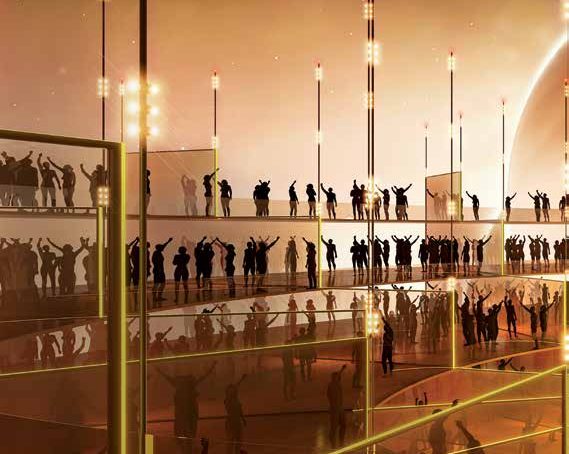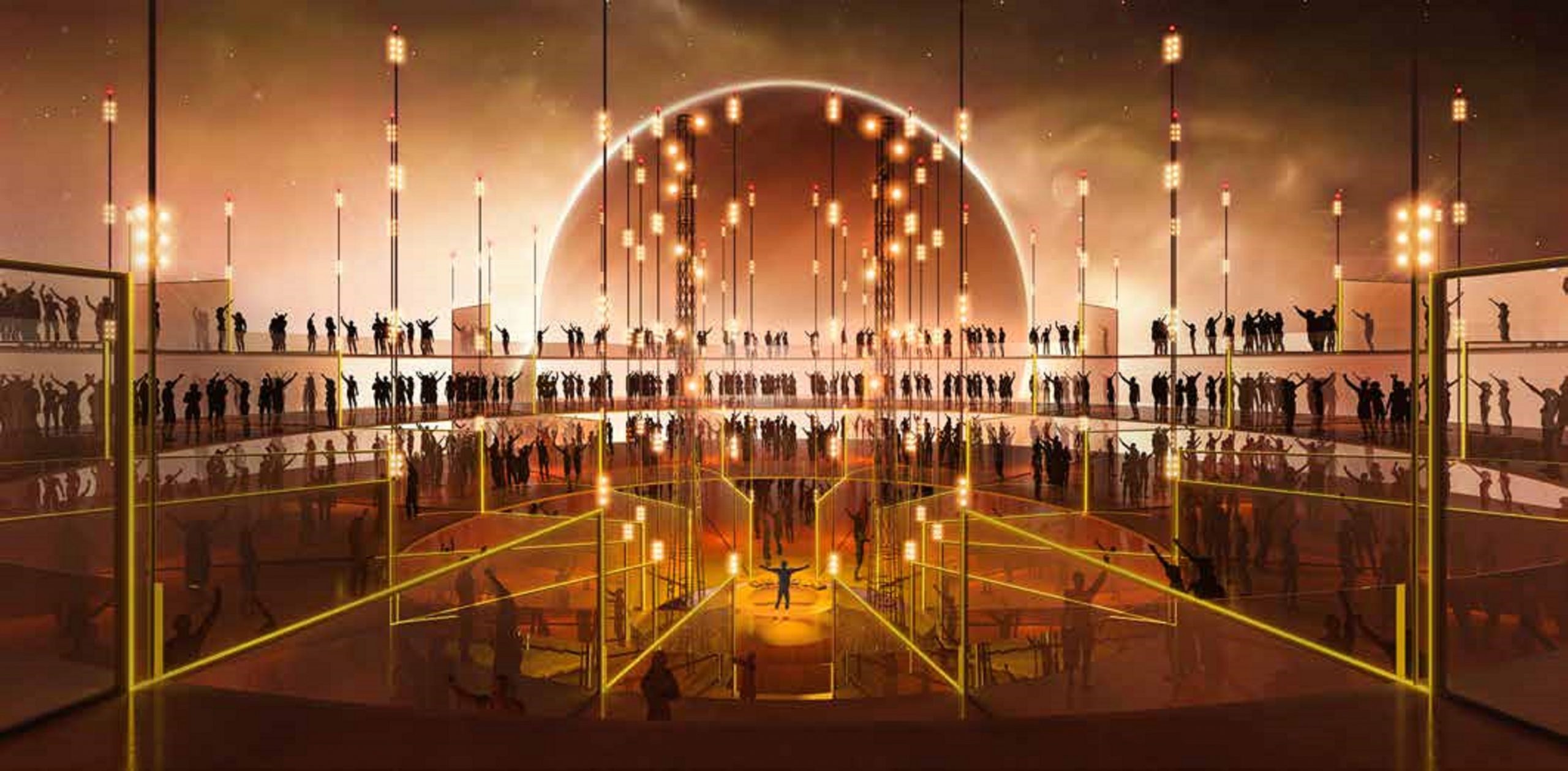

Architecture and design in the post- Covid-19 world will look different, especially when it comes to how we gather in and use large public spaces, such as airports, hotels, hospitals, offices and nightclubs. This won’t be the first time in history that cities, buildings and spaces will be reimagined or redesigned in response to an increased understanding of a crisis.
While popular public spaces have always been the most engaging and the most crowded, this pandemic has taught us that sharing can also be possible under strict social distancing measures. As these norms of personal space continue to evolve every single day, public spaces are set to become more flexible in terms of physical engagement. Projects are already dispersing people in wider spaces and are generating different and parallel journeys.
In November last year, RG/Architects was invited to take part in “The Shape of Things to Come” exhibition, part of Downtown Design Dubai. We were encouraged to explore the idea of designing a public space post Covid-19, specifically a nightclub. We named our concept “Evolve.”
The beauty of nightclubs is that they allow great experiential and creative exploration. I personally like this very much because I am content-oriented. When working on a club, I think of the experience I want to create and the small details that will enhance it. I push myself to change the visual paradigm and create something brand new. Clubbing is a multisensory experience that involves tactile, visual and auditory stimulation. Touching and closeness, the defining features of crowds, are usually at the heart of the clubbing experience. With the break of Covid-19, we found ourselves deprived of our sense of touch. There is now a pressing need to redefine the concept of “crowd.” Our natural behavior remains the same but has simultaneously changed a lot. We still have gatherings but in smaller groups; we still greet but minimize physical contact. We need to explore alternative ways of clubbing and discovering our senses while being deprived of touch. The concept of the post-Covid-19 nightclub revolves around reshaping our nightlife by creating a new experience in a way that preserves our need to go out in the midst of a new set of living conditions. The recent pandemic challenged not only the way people connect with each other but also how they experience and interact with their built environments. Therefore, the idea was to create an environment based on a concentric layout focused on three main factors: space, people and entertainment. This layout is broken down into fragmented modules, creating safe spaces for groups with a restricted number of people, all pointing towards the DJ at the heart of everything. Platforms are essential in each module to ensure distancing and enhance visual communication and auditory stimulation while easing the crowd into the new safety rules. The structure offers an alternative to isolation by creating areas of privacy and social distance within an otherwise public setting. Particularly, when juxtaposed with the current reality of social distancing, the structure’s non-invasive glass walls provide a translucent frame of reference and a sense of being connected to the world while still ensuring privacy and safety. This new experience is accompanied by major technological implementations in all interactive elements and systems. Almost everyone predicts that public spaces will move toward greater automation to mitigate contagion, with Covid-19 speeding up development of all types of touchless technology, like automatic doors, voice activated elevators, cellphone-controlled room entry, hands-free light switches and temperature controls, digital personal order menus, etc.
Well-ventilated, open spaces that allow for removing potentially contaminated air from any given area will replace the hermetically sealed environments in which so many of us work, live and play. The element of technology thus plays a major role in creating safer spaces.
Material exploration is also an aspect we cannot forget while designing the nightclub of the future. We are increasingly calling on antibacterial fabrics and finishes that will minimize the spread of the virus.
Whereas social distancing would appear to be a necessary and hopefully temporary requirement, it’s reasonable to think that concerns about future viruses might encourage architects to design with an eye toward creating open spaces that enable and encourage people to spread out. The spaces we occupy together need to be designed so that we can unite while minimizing virus transmission. We cannot redesign social spaces to separate us but must shape them to bring us together as safely as possible. This is where limitation in physical freedom is balanced by the expanded sensory experience, leaving room for a new definition of normality, which is how “Evolve” was created. We can still club post Covid-19; we’ll just find a way to do it differently.

founder of RG/Architects














